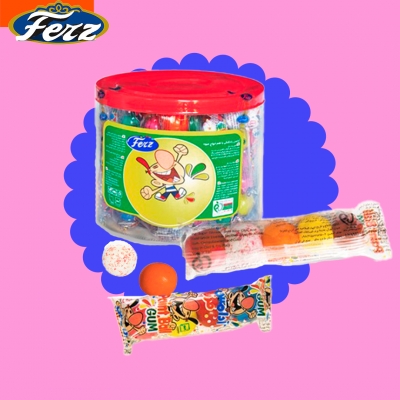Chewing gum distribution involves a comprehensive process that encompasses manufacturing, packaging, and delivering chewing gum products to various points of sale. Here are some details about the key aspects of chewing gum distribution
Manufacturing and Packaging
Chewing gum is produced in manufacturing facilities where ingredients are mixed, shaped, and processed to create the final gum product . The gum is then packaged into individual units, blister packs, sticks, or various other forms depending on the manufacturer's specifications .
Distribution Channels
Chewing gum is distributed through a diverse set of channels, including wholesalers, retailers, supermarkets, convenience stores, vending machines, and online platforms. Manufacturers may establish partnerships with distributors who buy gum in bulk and then distribute it to retailers or directly to consumers .
Wholesale Distribution
Wholesale distributors play a crucial role in the distribution chain. They purchase large quantities of chewing gum from manufacturers and supply it to retailers, helping to bridge the gap between production and retail .
Retail Distribution
Chewing gum is prominently displayed in retail outlets, often near checkout counters to encourage impulse purchases. Supermarkets, convenience stores, gas stations, and pharmacies are common retail locations for chewing gum.
Vending Machines
Chewing gum is distributed through vending machines strategically placed in high-traffic areas such as schools, offices, public transportation hubs, and shopping centers. Vending machines provide a convenient and accessible way for consumers to purchase gum on the go .
Online Distribution
With the growth of e-commerce, many chewing gum manufacturers have embraced online distribution. Consumers can purchase gum directly from manufacturer websites or through online retailers, with products delivered to their homes.
Logistics and Transportation
Efficient logistics and transportation are critical for timely and reliable distribution. This involves coordination between manufacturers, distributors, and transportation companies to ensure products reach their destination without delays .
International Distribution
Chewing gum distribution often extends beyond national borders. Many gum manufacturers distribute their products globally, requiring coordination of logistics, adherence to international trade regulations, and consideration of cultural preferences .
Marketing and Promotion
Marketing and promotion are vital components of chewing gum distribution. Advertising campaigns, in-store promotions, and point-of-sale displays are employed to attract consumers and boost sales .
Compliance and Regulations
Manufacturers and distributors must comply with various regulations related to food safety, labeling, and quality standards. Adherence to these regulations ensures that chewing gum products meet the required standards in the regions where they are distributed .
In summary, chewing gum distribution is a complex process that involves several key players, including manufacturers, wholesalers, retailers, and logistics providers. Effective distribution strategies, marketing initiatives, and compliance with regulations contribute to the successful placement of chewing gum products in the hands of consumers.





